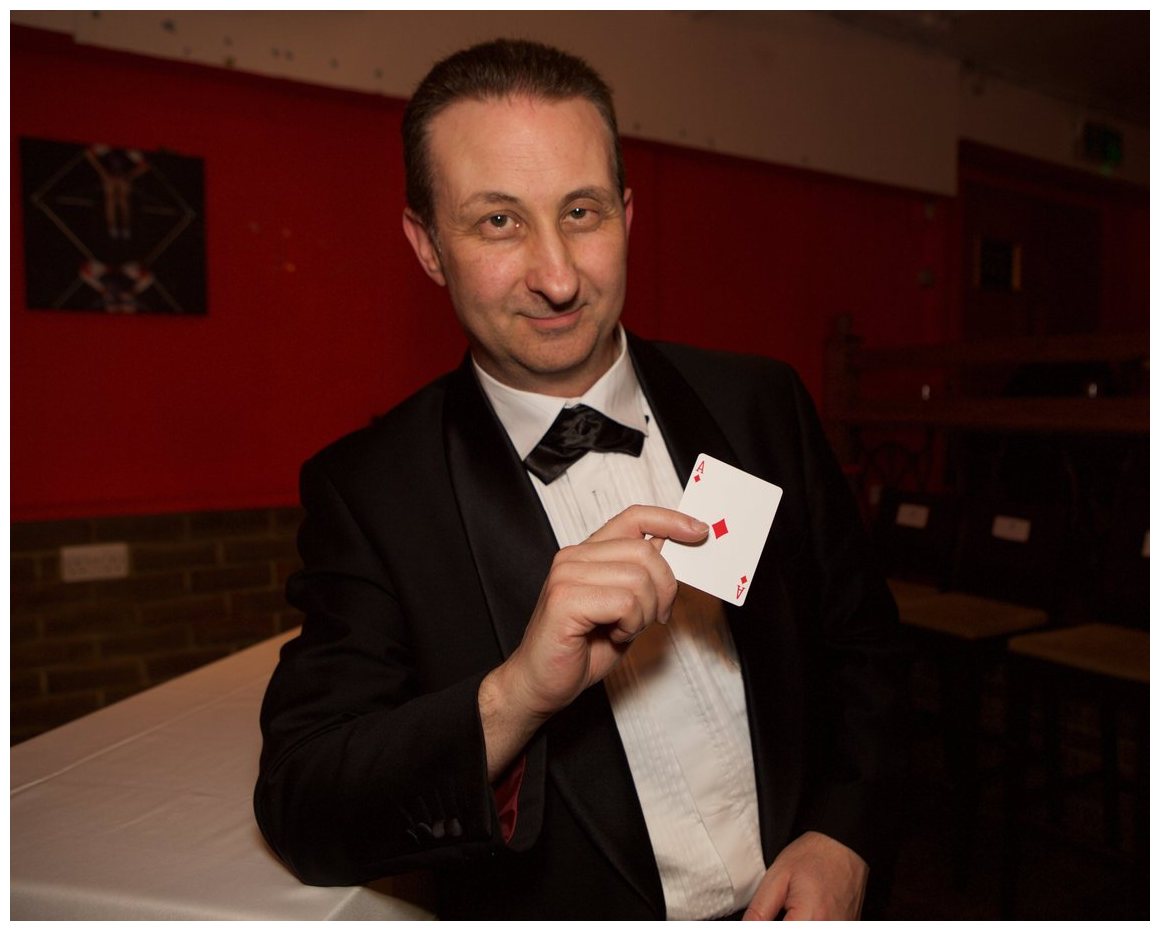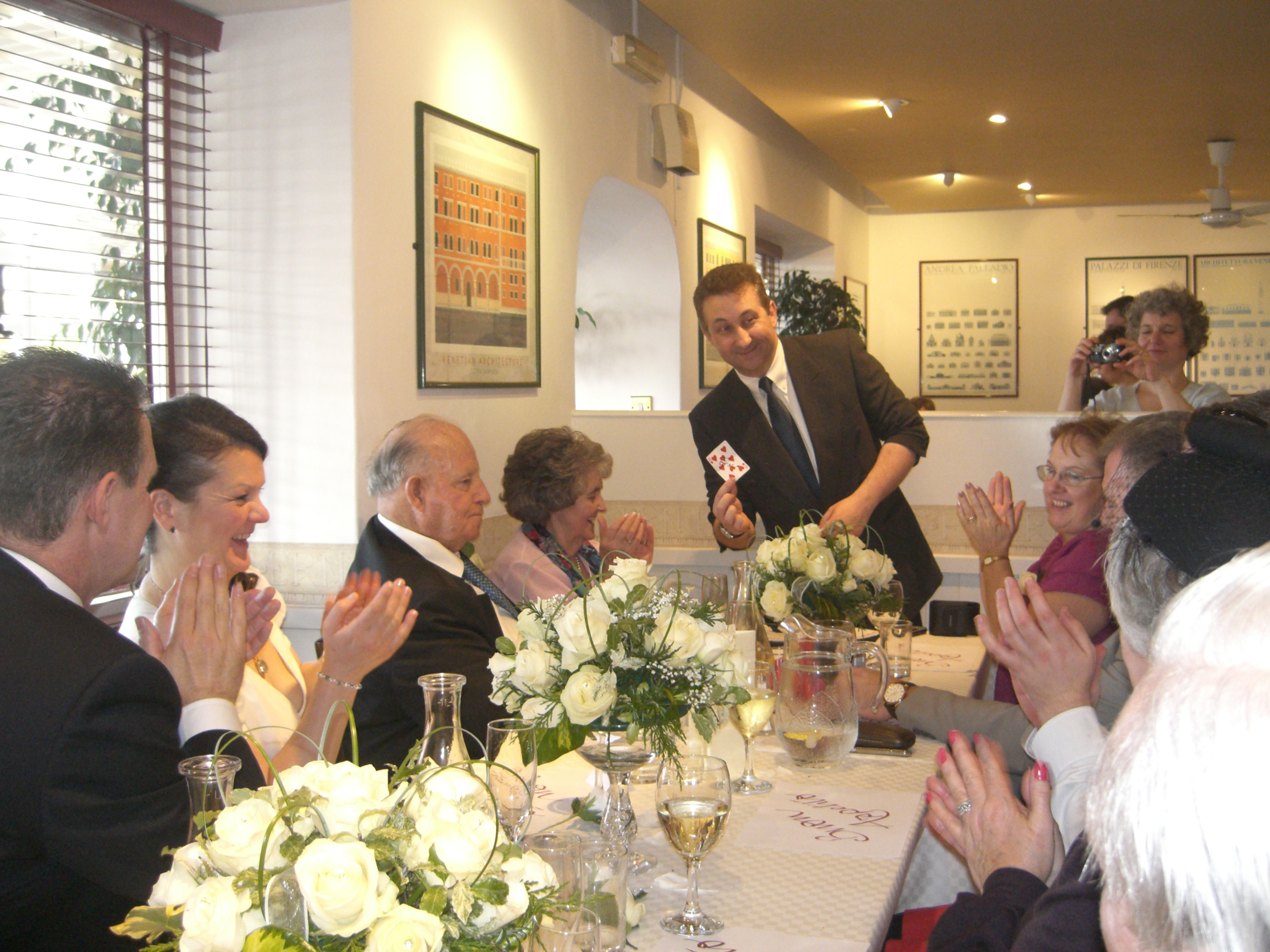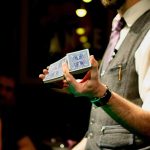
Performing Magic for an Audience: 7 Tips for Your First Show


Andy Field is a professional magician, offering table top magic, sleight of hand illusions, mind reading and more, for a variety of occasions. Over the years Andy has built a strong global following, boasting over 5,000,000 views on his YouTube channel and an array of reviews across multiple platforms. Having amassed experience as a wedding magician, party magician & close up magician, Andy is seen as one of the industries most tried and tested professional magicians.
You’ve practiced your tricks until you could do them with your eyes closed. You’ve rehearsed your patter and routines over and over and over again. Still, nothing can truly prepare you for stepping out onto that stage for the first time. The heady combination of nerves and excitement can leave you reeling.
It’s essential you don’t let these feelings overwhelm you. Seasoned magicians can channel these nerves and turn them into adrenaline that spurs them on to perform at their very best. This is something that requires practice and experience to master.
To help you, we’ve put together a guide with some invaluable advice. Learn 7 essential tips to feel confident, connect with your audience, and deliver an unforgettable show. These magic performance tips will give you a foundation upon which you can continue to hone your skills.
Want magic lessons near me for hands-on help? Book a coaching session with Andy Field before your big performance.
Tip #1: Polish Your Fundamentals
The first tip on our list is arguably the most important: polish your fundamentals. Without an excellent grasp on the basics of magic, you’re never going to be able to truly progress and your performances will suffer as a result. You could fumble your cards or forget a critical move. These mistakes will only make your nerves worse, and you could be facing a performance disaster.
When you’re in practice, go over your routines and sleights slowly. Understand the mechanics of how they work. Do them forwards, backwards, sideways and upside down. Build your confidence with them, and then gradually increase the speed. Eventually, you’ll be able to do them rapidly without even thinking. Make sure every part of each trick is like second nature, only then can you think about performing in front of an audience.
Mastering these fundamentals is the most critical part of your journey as a magician. Once you’ve got a handle on the basics, you can then start exploring options for performing, whether that’s at something like a corporate event or a wedding.
Tip #2: Structure Your Routine

The last thing you want to do is to go onstage poorly prepared. You can’t just wing it; without putting in the work beforehand, you’re never going to be able to keep your audience engaged from start to finish.
Breaking down your routines into bullet points can help you better understand the structure and the flow. Focus on the key points and build your set around them. Don’t forget transitions, either. The space between tricks is the perfect time to engage your audience and build a connection. Dead time between tricks is a one-way ticket to a bored and uninterested audience.
Check out our guide on common mistakes beginner magicians make. We offer more helpful tips for structuring a performance.
Tip #3: Master Your Patter
Whether you’re going for mystery to thrill your audience or humour to get them laughing, patter is one of the most important tools for a magician. Tricks by themselves can entertain, but you need to weave a story around them if you want them to be truly memorable.
This might come naturally to you, but it might not. Either way, preparing ahead of time is the key to success. Outline a script for your routine. Go into plenty of detail, you can always change things or improvise further down the line. The more you have, the better. It will ensure you don’t find yourself stuck onstage with nothing to say.
Work on the pace of your performance, too. Study things like comedic timing and learn how to pause for dramatic effect. Keeping your audience engaged and entertained is the name of the game.
For deeper insights, check out our ‘Psychology of Magic’ approach to audience engagement.
Tip #4: Use Misdirection Intentionally
Without misdirection, there would be no magic. It really is that simple. Misdirection is fundamental to the art of magic. If you can’t distract and redirect your audience’s focus, you’re never going to be able to pull off that sleight that sets up the big reveal. This is particularly important if you’re performing for a suspicious audience. They’re going to be watching you like a hawk, so you’ll need to be a misdirection master if you want to successfully maintain the illusion.
Misdirection can come in many forms. To succeed, you need to be able to make use of them all. Eye contact, body language and hand gestures are all essential techniques. This is where storytelling comes in handy too, shifts in tone or surprise statements can distract the audience while you work your magic.
Rehearse with a friend and ask them to watch your every move. This will really help you develop your misdirection skills.
Need hands-on guidance? Book a coaching session to refine your misdirection skills.
Tip #5: Overcome Stage Fright
Nerves are completely natural. Even the most experienced performers will get nervous. The key is not letting these nerves take over. If you do, they could ruin the flow of your routine. In a worst-case scenario, you could inadvertently make a mistake that reveals the secret behind your trick.
Obviously, you want to avoid this. Want to know how to perform magic confidently? Learning how to manage these nerves is the most important step. Try out deep breathing exercises and positive visualisation ahead of your show. You can also warm up beforehand, which means you won’t be heading out there totally cold.
Another approach is to spend some time in the venue before the performance. Familiarise yourself with the surroundings, test out the acoustics and check the lighting set up. This can help ease any anxiety you might have and will ensure there are no nasty surprises later, such as a distracting echo or spotlight shining directly into your eyes.
Confidence grows with experience—mentoring can speed that process. Reach out to learn more about Andy Light’s mentoring service.
Tip #6: Engage the Audience
A common misconception beginner magicians make is focusing on the tricks and nothing else. While these are undoubtedly an integral part, engaging the audience is arguably just as crucial. Your audience is there to be entertained, not to simply watch you speed through a few card tricks in silence.
There are numerous ways you can go about engaging your audience. You could invite volunteers up on to stage to pick a card, you could ask audience members to make predictions before a big reveal, or you could incorporate some comedic banter and gentle, good-natured ribbing. Often, you’ll find that the most successful magicians combine all of the tactics at once.
You need to learn how to read your audience. By studying their reactions, you’ll learn what they like and what they don’t like and you can adapt your routine accordingly. Explore the ‘Psychology of Magic’ page for more strategies on reading your audience’s cues.
Tip #7: Test & Refine Through Feedback
There’s nothing wrong with practicing in your bedroom mirror. That’s where we all got started. Yes, even the most famous magicians were in your shoes once. However, it’s being able to translate preparing for a magic show into real performances that separates the amateur from the professional. Your mirror isn’t going to heckle you, and if you make a mistake, you can just start again. There’s a world of difference between practice and performance, understanding is critical.
Making this jump can be difficult and incredibly intimidating. It’s all about taking things slowly. You don’t want to jump straight into a huge performance for your first show. Start recording your practice routines and watching them back, you’ll pick up on mistakes that you can correct moving forward. If a certain section or segment isn’t resonating, rework it or reorder it until it flows more naturally. You can also share these recordings with trusted friends or mentors to get a second opinion.
Ready for expert feedback? Book a rehearsal session and elevate your act.
Conclusion
Getting ready to step out onto that stage and perform magic for audience for the first time is an incredible feeling. To succeed, you need to be prepared. Performing magic isn’t about perfection—it’s about creating wonder. Follow these tips to confidently step onstage:
Polish Your Fundamentals: Master the basics to improve your confidence and take to the stage like a pro.
Structure Your Routine: Your routine should flow naturally, and this can only be achieved through structure and practice.
Master Your Patter: Magicians are storytellers. Write a script for your routine and study pacing and comedic timing.
Use Misdirection Intentionally: Magic is all about misdirection. Learn how to manipulate your audience’s attention to maintain the illusion.
Overcome Stage Fright: Deep breathing exercises, positive visualisation and spending time in the venue can help beat those pre-show nerves.
Engage the Audience: Audiences are there to be entertained. Use jokes, banter and participation to keep them engaged.
Test & Refine Through Feedback: Constructive criticism is the key to progression. Record your performances, watch them back and share with your mentor.
Looking for personal guidance? Sign up for magic tutoring with Andy Field and transform your first show into a hit!
MAKE AN ENQUIRY
Oops! We could not locate your form.



